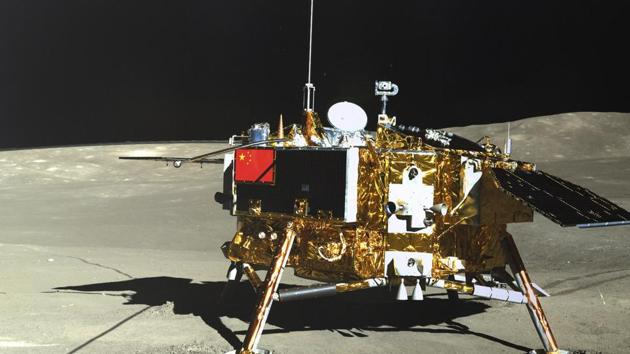After conquering dark side of the moon, China targets Mars in 2020: Report
On January 3, China’s robotic spacecraft Chang’e-4 landed on the far side of the moon, a first in the human history of space exploration. The China National Space Administration is working to send a probe to Mars.
Riding on its success of landing a rover on the far side of the Moon earlier in January, China’s space agency is planning to launch another mission to the Moon by the end of 2019 and a mission to Mars as early as 2020, the media reported.

The plans underscore China’s ambitions in space at a time when the US is curtailing NASA’s budget and increasingly handing over space exploration to commercial adventurers, the Washington Post reported on Monday.
The China National Space Administration is working to send a probe to the Red Planet, said Wu Yanhua, deputy chief of the agency.
“China will carry out its first-ever exploration mission to Mars around 2020,” he said.
On January 3, China’s robotic spacecraft Chang’e-4 landed on the far side of the moon, a first in the human history of space exploration.
The 1.3-tonne lander, which made a soft landing on the Moon, put potato seeds and silkworm eggs housed in a chamber, and fed natural light and nutrition, on the Moon.
The space agency plans to launch a Chang’e-5 mission at the end of 2019 with the goal of collecting samples from the near side of the moon, Wu said. They would be the first samples retrieved since 1976.
China is also building its own space station, called Tiangong or Heavenly Palace, which is expected to be operational in 2022. But the agency is still deciding whether to send astronauts to the Moon, Wu said.
It also deployed a small rover called Yutu-2, or Jade Rabbit-2, to explore the surrounding lunar terrain, which is believed to be older than that on the near side.
“All these are first-time breakthroughs for humankind,” Wu said, adding “they are bound to make significant impacts on both China and the world.”
Meanwhile, China also said it has shared data with NASA about the Chang’e-4 lunar mission.
That claim could not be immediately substantiated, but it could raise eyebrows on Capitol Hill because NASA and the Chinese agency are prohibited from cooperating without congressional approval, the report said.
The 2011 Wolf Amendment, motivated by security concerns, bans NASA scientists from working with Chinese citizens affiliated to a Chinese state enterprise or entity.
“Expanded international cooperation is the wish of all scientists,” Wu said. “It takes joining of forces among the world’s big space powers to really make a difference in human space exploration.”



